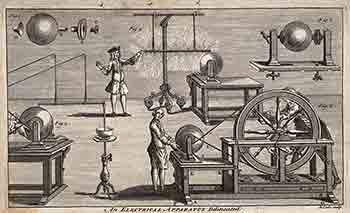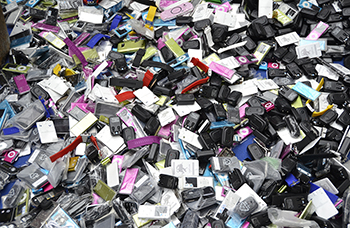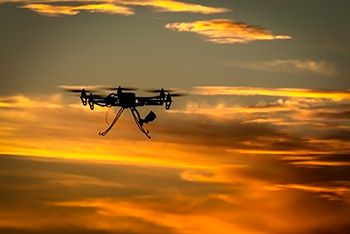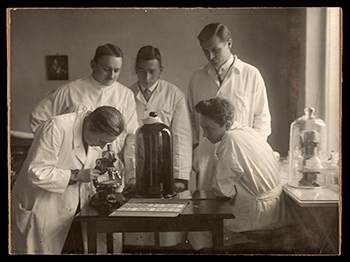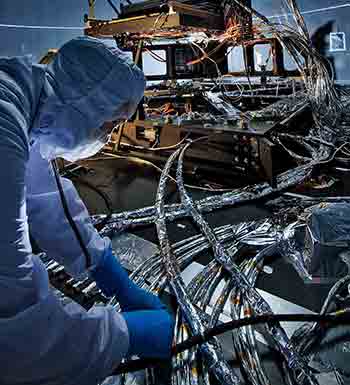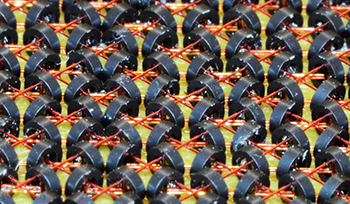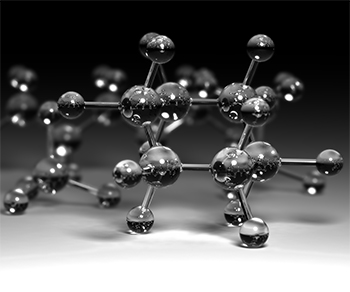"O’Reilly Hardware Podcast" entries

Rob Coneybeer on Nest and the next big thing in hardware
The O’Reilly Hardware Podcast: Virtual reality, robotics, and today’s hardware landscape.
Subscribe to the O’Reilly Hardware Podcast for insight and analysis about the Internet of Things and the worlds of hardware, software, and manufacturing: TuneIn, Stitcher, iTunes, SoundCloud, RSS.
In this new episode of the Hardware Podcast, David Cranor and I talk with Rob Coneybeer, managing director and co-founder of Shasta Ventures, one of the critical first investors in hardware startups including Nest, Fetch Robotics, and Turo (formerly RelayRides).
Discussion points:
- Why Nest looked like an appealing investment back in 2010
- Coneybeer’s focus on virtual reality and robotics as the next big things for hardware startups.
- Why it’s essential for hardware startups to have a long-term plan for improving products after they’re in place, and the importance of over-the-air software updates.
- The consumer psychology of selling a compelling hardware product, and when to aim for high price and high value. “People are willing to spend money when there’s something that’s really revolutionary,” says Coneybeer.
- The current state of venture capital investments in hardware startups. While raising later rounds is becoming more difficult, Coneybeer says: “the most interesting, innovative hardware companies will always find capital.”

Rachel Kalmar on data ecosystems
The O’Reilly Hardware Podcast: Collecting, sharing, and accessing data from sensors.
Subscribe to the O’Reilly Hardware Podcast for insight and analysis about the Internet of Things and the worlds of hardware, software, and manufacturing: TuneIn, Stitcher, iTunes, SoundCloud, RSS.
In this new episode of the Hardware Podcast, David Cranor and I talk with data scientist Rachel Kalmar, formerly with Misfit Wearables and the founder and organizer of the Sensored Meetup in San Francisco. She shares insights from her work at the intersection of data, hardware, and health care.
Discussion points:
- The need for a “data ecosystem” approach: it’s important to understand the entire stack from acquisition through storage and analysis, and where security and privacy become concerns.
- Analysis and insight as the real value in data: consumers get very little from raw data.
- Authentication for smart devices—and an experiment (let us know if your lights went out during this podcast by e-mailing hardware@oreilly.com).

Sanjit Biswas on industrial sensors
The O’Reilly Hardware Podcast: The business of building, marketing, and deploying sensors in tough environments.
Subscribe to the O’Reilly Hardware Podcast for insight and analysis about the Internet of Things and the worlds of hardware, software, and manufacturing: TuneIn, Stitcher, iTunes, SoundCloud, RSS.
In this episode of the Hardware Podcast, David Cranor and I talk with Sanjit Biswas, founder and CEO of the industrial sensor company Samsara.
Discussion points:
- The challenges of making modern systems work with ancient industrial control systems already in the field
- The process of designing temperature sensors for heavy-duty deployments, including environmental constraints, firmware, testing, and necessary certifications
- Price sensitivity in the industrial sensor market; Samsara is one of several interesting startups that make it practical for mid-size businesses that haven’t been previously automated to add sensors

The new hardware movement at CES 2016
The O’Reilly Hardware Podcast: Observations from the Consumer Electronics Show.
Subscribe to the O’Reilly Hardware Podcast for insight and analysis about the Internet of Things and the worlds of hardware, software, and manufacturing.
David Cranor and I have devoted this episode of the Hardware Podcast to a recap of the 2016 Consumer Electronics Show. It’s probably the last recap you’ll hear, since the show happened four weeks ago, but that just means it’s had more time to marinate.
Signs of the new hardware movement were everywhere this year in the innovative new products as well as the cloud of fast-follower devices that surrounded each successful piece of hardware.
Items of note:
- DJI and GoPro have defined the standard design and functionality languages in their fields, and are imitated by nearly every other drone and action cam on display.
- Hoverboards are the first electronics fad that has come straight from Shenzhen. During CES, U.S. marshals raided a Chinese exhibitor’s booth due to a patent infringement claim from the U.S. maker of the Onewheel scooter.
- VR was everywhere, with Samsung’s Gear VR headset particularly ubiquitous
- It’s always interesting to see companies that you wouldn’t necessarily expect at an electronics trade show. We talk about how companies such as MasterCard and United Health were associating themselves with the industry at CES.
- 3D printing has moved into the downward section of Gartner’s hype cycle

Matthew Berggren on making electronics accessible
The O’Reilly Hardware Podcast: Better ways to design electronics.
Subscribe to the O’Reilly Hardware Podcast for insight and analysis about the Internet of Things and the worlds of hardware, software, and manufacturing.
In our new episode of the Hardware Podcast, David Cranor and I talk with Matthew Berggren, who at the time the interview was conducted last December was senior director of product at Supplyframe. (Berggren is now director of Autodesk Circuits at Autodesk.)
Our discussion focuses on the need for abstracted modules and better metadata in electronics. Berggren gets to the root of it here:
There are 30 software developers for every hardware engineer in the world. That’s not only a tremendous bottleneck, but if you accept the premise that the next generation of products are going to be some hybrid of hardware and software—and really, hardware is the means to interact with the real world, and I want to write software applications that will interact with the real world—then there is this massive blue ocean out there that should present tremendous opportunity to semiconductor manufacturers, or anyone else who wants to get into that space.

Roger Chen on hardware and robotics startups
The O’Reilly Hardware Podcast: Hardware from the venture capitalist’s point of view.
Subscribe to the O’Reilly Hardware Podcast for insight and analysis about the Internet of Things and the worlds of hardware, software, and manufacturing.
In this new episode of the Hardware Podcast, David Cranor and I talk with Roger Chen, formerly a principal at O’Reilly AlphaTech Ventures, O’Reilly Media’s sister VC firm.
Discussion points:
- Chen’s perspective as an investor on companies that are creating 3D robotics, drones, and satellites
- The Maker movement’s impact on the hardware startups
- Etsy’s influence on the new hardware movement
- Trends in robotics, and the outlook for robotics startups

Charles Fracchia on a new breed of biologists
The O’Reilly Hardware Podcast: The merging worlds of software, hardware, and biology.
Subscribe to the O’Reilly Hardware Podcast for insight and analysis about the Internet of Things and the worlds of hardware, software, and manufacturing.
In this new episode of the Hardware Podcast—which features our first discussion focusing specifically on synthetic biology—David Cranor and I talk with Charles Fracchia, an IBM Fellow at the MIT Media Lab and founder of the synthetic biology company BioBright.
Discussion points:
- The blurring of the lines between biology, software development, hardware engineering, and electrical engineering
- BioBright’s efforts to create hardware and software tools to reinvent the way biology is done in a lab
- The most prominent market forces in biology today (especially healthcare)
- How experiments conducted using Arduino or Raspberry Pi devices are impacting synthetic biology
- Pembient’s synthetic rhino horns

Joe Biron on IoT platforms
The O’Reilly Hardware Podcast: Building systems to get the most from connected devices.
Subscribe to the O’Reilly Hardware Podcast for insight and analysis about the Internet of Things and the worlds of hardware, software, and manufacturing.
This episode of the Hardware Podcast features my second discussion with Joe Biron, VP of IoT technology at ThingWorx, a PTC business that offers a platform for rapid deployment of Internet of Things applications.
Discussion points:
- How IoT platforms provide the functionality that enables advanced capabilities for IoT products
- The common architecture of properties, services, and events
- How to future-proof an embedded application
- Platforms for industrial versus consumer devices
- The potential for products that can update their own behavior
- Embracing—or avoiding—smartphone creep, in which functions once performed by specialized hardware are taken over by a phone

Mengmeng Chen on demystifying manufacturing
The O’Reilly Hardware Podcast: Making manufacturing accessible.
Subscribe to the O’Reilly Hardware Podcast for insight and analysis about the Internet of Things and the worlds of hardware, software, and manufacturing.
In this episode of the Hardware Podcast, we talk with Mengmeng Chen, head of U.S. operations at Seeed Studio.
Discussion points:
- Chen’s work on—and thoughts about—the Pop-up Factory, a production line that manufactured connected devices on the floor of the Solid 2015 conference
- Ways to start manufacturing in Shenzhen without a gigantic first order
- Seeed Studio’s “Open Parts Library,” a standard library of approximately 1,200 parts that can be assembled quickly and inexpensively
- Differences between the component supply chains in the U.S. and China
- Seeed’s Wio Link Kickstarter campaign

Robert Brunner on designing and building great products
The O’Reilly Hardware Podcast: The critical role of design in creating iconic products and brands.
Subscribe to the O’Reilly Hardware Podcast for insight and analysis about the Internet of Things and the worlds of hardware, software, and manufacturing.
Our expectations for industrial design have risen immeasurably in the last decade. Think of any piece of consumer electronics from 2005—a BlackBerry, for instance—and you’ll think of something that was encased in plastic painted silver to imitate metal, with a too-light heft and a rattle when shaken.
Now, nearly every successful piece of consumer hardware is the result of careful design and exquisite manufacturing. Apple deserves a great deal of credit for that shift by resetting the baseline with the iPhone in 2007, but new tools and processes have played an important role as well. Digital design has become easy and sophisticated, and contract manufacturers can do spectacular things with glass, aluminum, and semiconductors that were nearly impossible just a few years ago.
Our guest on this week’s episode of the O’Reilly Hardware Podcast is Robert Brunner, a founder of this new era of design. Brunner was director of industrial design at Apple from 1989 to 1996, overseeing the design of the PowerBook. He was the chief designer of Beats by Dr. Dre, the design-driven line of headphones that Apple acquired for $3 billion last year. And he’s the founder of Ammunition, which has worked with startups and large companies on a wide range of innovative consumer products.



